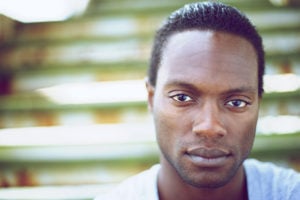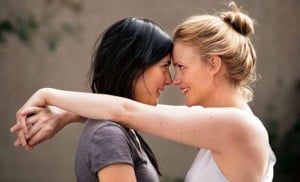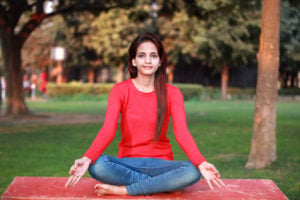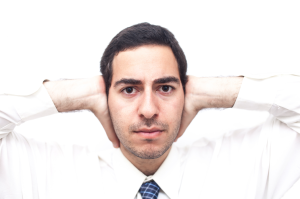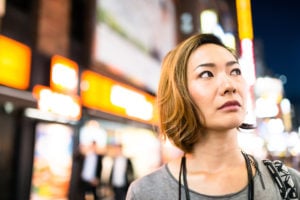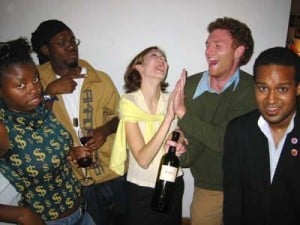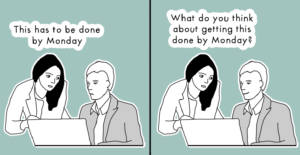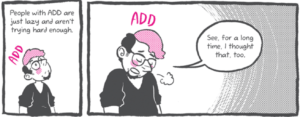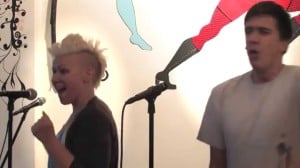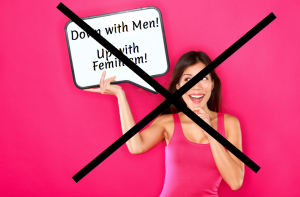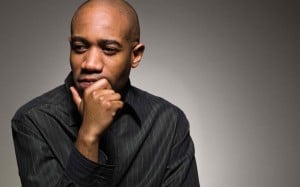
Source: BP’s Fuel for Thought
Not too long ago, I went karaoking with my wife and about ten of her female coworkers.
It’s a yearly ritual. They’re all teachers, and they were celebrating surviving another crop of tireless elementary schoolers.
A few boyfriends and husbands joined, too. But we mainly stayed out of the way — once we entered the private room, we let our partners pick the songs.
An hour or so in, I noticed a pattern.
Everyone sang the first song, “School’s Out For Summer” by Alice Cooper. (You could taste the catharsis!) During the next couple of songs — by Beyoncé and Alanis Morissette — the guys went to the bar. But then “We Didn’t Start the Fire” by Billy Joel came on, and we rushed back! When Jewel played afterward, though, we four guys faded to the corner.
The music blared, so we couldn’t really chat. We just stood there, awkwardly clinking the ice in our drinks. After Jewel came Celine Dion’s “My Heart Will Go On” and then Madonna’s “Like A Prayer.” We knew the lyrics, of course — How could we not, having grown up in the ‘90s? — but instead of dancing and singing, we just pretended not to notice each other mumbling “In the midnight hour, I can feel your power.”
Why wouldn’t we sing along to female artists?
Because we’d been taught that only girls and gay men enjoy those musicians. To sing along supposedly would have suggested femininity and homosexuality, which — again, as we’d been taught — would have threatened our valued masculinity.
Looking back, I’m embarrassed at my reluctance to sing along. Firstly, I missed an opportunity to have fun with my wife and her coworkers. Secondly, I undermined my personal and professional principles: How could I, someone who openly identifies as an ally to women and the LGBTQIA+ community, feel embarrassed about singing a song by a female artist?
Like many men, I learned about masculinity — and especially how to protect it — at an early age.
My elementary school friends and I used to play “Smear the Qu**r,” a version of tag where the kid holding the ball — the dubbed “qu**r” — is chased, tackled, and forced to give it up.
Later, in middle and high school, “locker room talk” began. On the one hand, guys would over-embellish their sexual prowess, bragging about the girls they’d “banged” and the mom’s they’d “do.” The raunchier the stories and gestures, and the more they degraded women, the more “manly” these teens became.
On the other hand, these guys would also insult “wussy” males — anyone who wasn’t athletic enough, had too many female friends, preferred the arts, or seemed homosexual, whatever that means.
Along with a different (though equally explicit) set of gestures, they’d undermine these individuals’ masculinity by calling them all sorts of sexist and homoantagonistic insults.
Of course, the locker room didn’t always sound like this. Nor did everyone actively participate in such posturing. Most of my friends and I, for example, never felt comfortable or confident enough to engage. (For me, high school meant just keeping my head down!) However, there was unspoken pressure to at least laugh along. Because if you didn’t, someone inevitably would accuse you of being a “qu**r” (or worse).
I was happy to leave the locker room behind when I went off to college. Partially through social justice coursework and partially through a more diverse network of friends, I started to better understand what was driving the sexist language of my high school.
We live in a patriarchal society, I learned.
What does this mean? Patriarchy is a social system in which men are privileged. Because men are privileged, masculinity is also privileged. Masculinity is the set of characteristics and roles generally considered typical and appropriate for men.
Reflecting upon my childhood, I realized that the traditional notion of a “real” man is a product of this patriarchal system.
Far from being natural, the teen boys reaffirmed — consciously or otherwise — the notions of manliness that they had inherited from family, the media, and social institutions. These notions advantage heterosexuality and masculinity over other sexualities and femininity. They also conflate gender with genitalia.
These realizations inspired me to declare myself an ally to feminism and LGBTQIA+ rights.
Feminism is a philosophy and movement aimed at establishing gender equality. Being an ally means supporting equal rights for LGBTQIA+ individuals through challenging heteronormativity (the privileging of heterosexuality) and cissexism (the assumption that gender is determined solely by biological sex, and that trans people are inferior to non-trans — aka cis — people). These two forms of allyship are linked because patriarchy disadvantages both women and the LGBTQIA+ community.
I couldn’t live in a society where even “neutrality” made me complicit with the systematic disempowerment of women and LGBTQIA+ individuals. Instead, I wanted to personally and professionally join those fighting for complete social equality, regardless of gender or sexuality.
However, being an ally is difficult, especially as a heterosexual cis male. The pressures of (traditional notions of) masculinity and a lifetime of systematic patriarchal training are difficult to overcome.
Nonetheless, I have compiled four pieces of advice — based on my own experiences and slip-ups — to help all cis males (myself included) become open feminists and allies.
1. Love Yourself as Your Self
I know this sounds like it comes straight out of a cheesy self-help book. But how can we undermine systematic patriarchy and the privileges of masculinity if we continue to define ourselves in relation to the standards that such patriarchy and masculinity reproduce?
“Real” men are taught to value strength, yet traditional notions of masculinity are so easy to crack. Think about it: that which takes an entire childhood and adolescence to develop can be undermined just through singing the wrong song at karaoke. This is why so many men go out of their way to “protect” their masculinity.
We are taught — and, furthermore, we teach each other — what a “real” man is. Through TV commercials, shows, movies, and magazines, men learn their ideal body shape, clothing, jobs, everyday behaviors, and so on.
But in order to be an open ally, we need to become comfortable in our own gender and sexuality without identifying ourselves in relation to others. We need to stop knocking each other down by regurgitating the same patriarchal myths.
A “real” man is not an athlete. A “real” man does not have a large penis. A “real” man does not have lots of sex with lots of women. A “real” man does not have a powerful, lucrative job.
True, a man could be an athlete, have a large penis, have lots of sex with lots of women, and have a lucrative job. But that doesn’t make him any more or any less a man than any other – nor should those attributes be the standard by which we evaluate ourselves or others.
The standard itself is an artifice.
Therefore, we should self-identify however feels the most natural to ourselves as individuals.
Of course, this is difficult and takes time. However, freeing ourselves of the baggage of social expectation also frees us to recognize our own privilege and the marginalization of others.
2. Anticipate the Criticisms You’ll Receive
Patriarchy is socially pervasive, and those who benefit from it often criticize those who attempt to subvert it. These criticisms are designed to undermine masculinity.
When I first advertised my allyship, some questioned my sexuality and even insulted me. “So what, are you gay now?” some asked. “Are you a girl?” Some even suggested that I’d betrayed my fellow (heterosexual cis) males.
In response, I’m embarrassed to admit, I initially defended myself utilizing their same, flawed framework. “No, I’m not gay!” I said. “I’m not a girl!” Such a defense, however, reinforces the devaluing of homosexuality and femininity vis-à-vis heterosexuality and masculinity.
The best comeback would have been to remind them that there is nothing shameful about being homosexual or a woman.
Despite the criticisms that some men wage against open allies and feminists, we need to remember that the masculinity that they try to undermine — if we can return to point #1 — is theirs, not ours.
3. Remember: Being an Ally Is More than Being Pro-LGBTQIA+ or -Woman
Allyship is a philosophy rooted in action.
Being an ally demands listening to and empathizing with others. It demands honesty about our questions, misunderstandings, and where we’re having trouble. It demands educating ourselves about feminism, allyship, patriarchy, and masculinity. And it demands that we apply that education, day in and day out, towards recognizing and subverting the systematic marginalization of others.
It takes work and making choices.
How will you respond if someone calls you gay in response to your feminism and allyship? What will you do if you overhear a stranger refer to someone as a “f*ggot” or make a rape joke? What will you do if a friend or family member calls someone a “f*ggot” or makes a rape joke? Will you continue to use the “he” pronoun when referring to doctors, but “she” when referring to nurses? Will you karaoke to Madonna?
4. Cultivate Friendships with Likeminded Individuals
This is not to suggest that you ditch your current friends. But it also doesn’t mean that your “one gay friend” automatically makes you an ally and feminist.
I became more comfortable — and more open and active — as an ally when I developed friendships with other feminists, allies, and members of the LGBTQIA+ community.
When we diversify our circle of friends, we more easily recognize how masculinity is constructed and feel less threatened when we start redefining ourselves by different standards.
Consequently, others’ insults sting less and we feel more comfortable and motivated to develop and express our feminism and allyship.
***
We have this idea that feminism is only for women or that LGBTQIA+ rights are only for members of the LGBTQI community.
But how can we live in an egalitarian society if we all don’t commit to destabilizing systematic disempowerment and privilege, if we all don’t commit to achieving universal equality?
Being open, unapologetic allies and feminists helps in this endeavor, just as it helps us to be better, more empathetic individuals, friends, and partners.
[do_widget id=”text-101″]
Andrew Hernández is a public anthropologist and teacher. He is completing his PhD in cultural anthropology at the Graduate Center, City University of New York, and he adjuncts at John Jay College of Criminal Justice (CUNY) and Baruch College (CUNY). Andrew bases his research out of West Africa and the Sahara, working on issues of human rights, labor and religion. In his spare time, you can find Andrew placating his dog, Pip, who he’s convinced is an evil genius. Follow him on Twitter @AndrewHernann.
Search our 3000+ articles!
Read our articles about:
Our online racial justice training
Used by hundreds of universities, non-profits, and businesses.
Click to learn more





